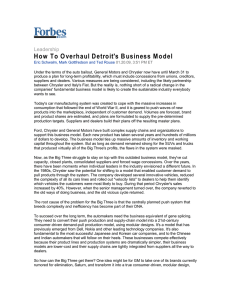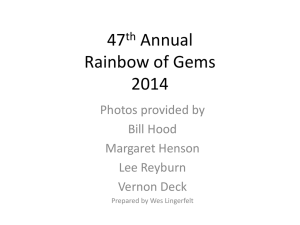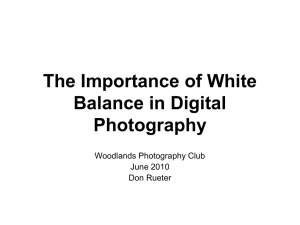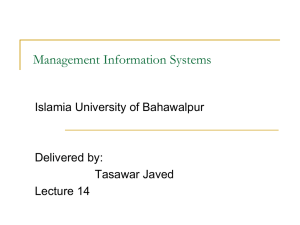Document
advertisement
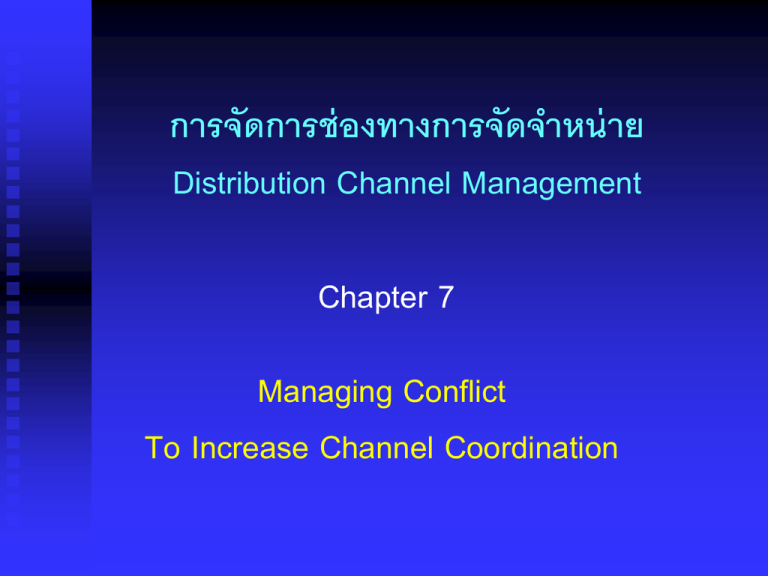
การจัดการช่ องทางการจัดจาหน่ าย Distribution Channel Management Chapter 7 Managing Conflict To Increase Channel Coordination Chapter 7 Outlines Learning Objectives - Distinguish circumstances where conflict is not negative - Understand how to diagnose conflict in terms of issues, frequency, intensity and importance - Understand three major sources of conflict: goals, perceptions, and domains - Understand why multiple channels have become the norm and describe ways to address the conflict - What is Gray Marketing and how it actually happens? Managing Channel Conflict Points of Discussion - What is Channel Conflict? - What are the effects of conflict, both for short and long term? - How does conflict arise and how can it be managed? - What are the best strategies for containing destructive and excessive conflict? - Learn strategies of resolving the conflict - Categorize conflict resolution styles and describe their effect Managing Channel Conflict The Meaning:“Channel conflict is behavior by a channel member that is in opposition to its channel counterpart. It is opponent centered and direct, in which the goal object sought is controlled by the counterpart” Managing Channel Conflict The Implication of channel conflict - A negative in many channel relationship - Sometimes channel are too peaceful, indifference, masking great differences - Conflict is desirable for members to raise their difference and working to search for better understanding and higher performance - Conflict should not be judged as a defect, a state to be eliminated - Conflict should be monitored and then managed Managing Channel Conflict Four different kinds of information to gather and combine to form an index of manifest conflict 1. Counting up the issues – what are the major issues? 2. Importance – ascertain the importance on each issue 3. Frequency of disagreement – how often the two parties disagree over each particular issue? 4. Intensity of dispute – ascertain how far apart the two parties on each particular issue The Consequences of Conflict Points of Discussion - Is conflict always undesirable? - When will conflict be desirable (functional)? - Are peaceful channels better channels (conflict is low)? - Can conflict improve channel members’ performance? The Consequences of Conflict Functional conflict is desirable if members - Communicate more frequently and effectively - Establish outlets for expressing their grievances - Critically review their past actions - Devise and implement a more equitable split of system resources - Develop a more balanced distribution of power in their relationship - Develop standardized ways to deal with future conflict and keep it within bounds Major Sources of Conflict Conflict is a staple in marketing channels because of - Built-in differences in viewpoint and goals - Differing perceptions of reality - Clash over domains (roles, responsibilities, territories) Major Sources of Domain Conflict Multiple channels is major source of market domain conflict - Multiple channels: Using more than one route to get to the same market - Different kinds of multiple channels: Dual distribution, plural distribution, hybrid distribution - Customers can find products easier to match their needs - Downstream members may lose motivation, withhold support, retaliate or exit the business Major Sources of Domain Conflict Ways that suppliers address multiple channel conflict - Devise different pricing schemes for different channels - Offer more support, more service, more product and even different products to different channel types - Offer the same product under different brand names to different channels - Sell primary part of the product line through one channel and secondary or peripheral products through another Major Sources of Domain Conflict Point of Discussion - What is Gray Marketing? - How can this happen? - Is the trend getting increasing or decreasing? - What are the advantages and disadvantages to suppliers? Major Sources of Domain Conflict Gray market: The unwanted channels - “Gray marketing is the sale of authorized, branded product through unauthorized distribution channels” - Gray marketing can be contrasted with black marketing or counterfeiting which involves selling fake goods as branded ones Major Sources of Domain Conflict Development of gray market coming from - Suppliers offer differential pricing to different channel members - Suppliers practice pricing differently to different geographic markets - Domestic products sold through high-service, high-price channels at home - Development of emerging markets and worldwide liberalization of trade - Price differences exist across boundaries or territories Conflict Management Points of Discussion - How dealers react once the destructive action from suppliers taken place? Conflict Management Reaction from dealers upon destructive incidences Dealers blame themselves - Constructive engagement - Withdrawing from the relationship Dealers blame the suppliers - Less likely to accept the situation passively - More likely to take any sort of action Dealers blame the environment Conflict Management Five different types of reaction from dealer to deal with disputes against suppliers 1. Passive acceptance: saying or doing very little about the issue 2. Venting: complaining vigorously without taking action 3. Neglecting the supplier 4. Threatening to resign the line 5. Engaging the supplier in constructive discussion Managing Channel Conflict Points of Discussion • How do channel members cope with conflict? Conflict Resolution Strategies Two approaches are presented 1. Develop institutionalized mechanisms - Joint memberships in trade associations - Distributor councils for two-way communication - Exchange of personnel programs (learning, knowing the other party’s tasks and interests) - Co-optation to share responsibility - Third-party mechanisms (mediation, arbitration) Conflict Resolution Strategies Two approaches are presented 2. Use common norms to resolve conflict - Flexibility (adapt to changing circumstances) - Information exchange (share all pertinent information) - Solidarity (work for mutual benefit) Conflict Resolution Strategies

